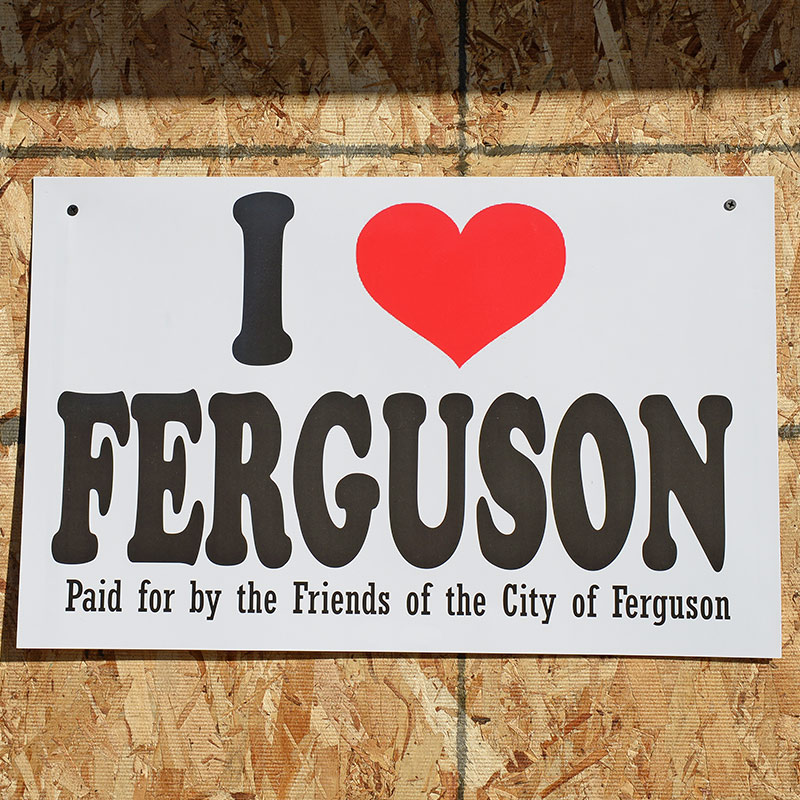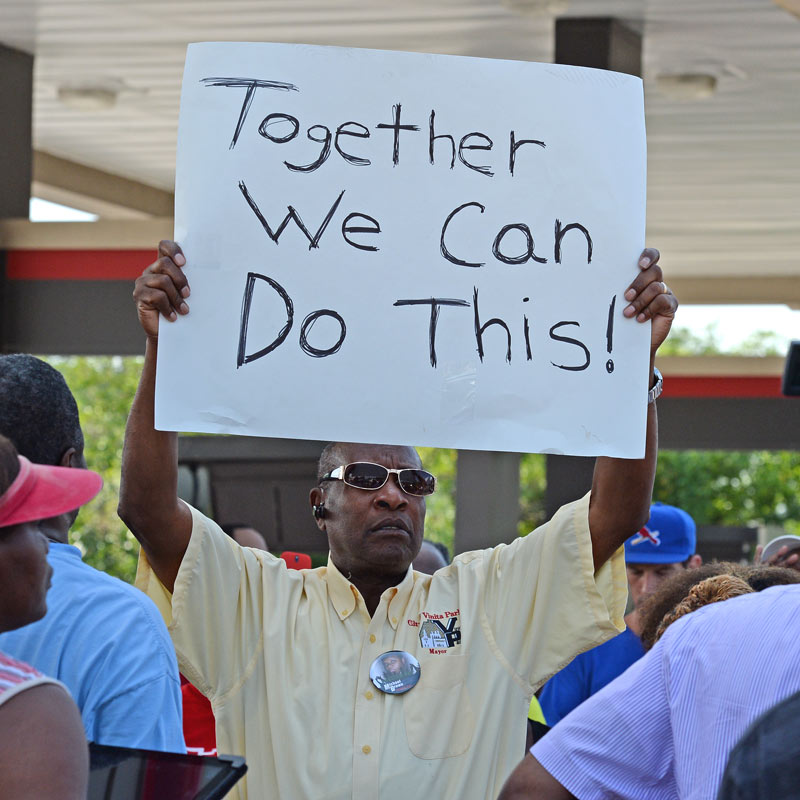 Michael Brown’s death on August 9, 2014, sparked a cascading series of protests, reactions, and racially charged dynamics that have come to be broadly referred to as “Ferguson.” Three years have passed, and in the aftermath it’s important for us to take stock of what progress has been made and whether we’re moving in the right direction. I believe the events in Ferguson are a wake-up call for all of Missouri and for the U.S. as a whole. Are we heeding that call?
Michael Brown’s death on August 9, 2014, sparked a cascading series of protests, reactions, and racially charged dynamics that have come to be broadly referred to as “Ferguson.” Three years have passed, and in the aftermath it’s important for us to take stock of what progress has been made and whether we’re moving in the right direction. I believe the events in Ferguson are a wake-up call for all of Missouri and for the U.S. as a whole. Are we heeding that call?
While Ferguson has received a lot of attention from the media and policymakers, let’s acknowledge that there is nothing unique about the city’s situation. The issues that brought it to the world stage are very similar to numerous other struggling areas in the region and country. Ferguson has become emblematic of the problems many of our communities face – including racial, social, economic, educational, and health disparities; but these problems extend far beyond the city’s borders.
Recently I wrote about underlying determinants of health, and how the Foundation views health from a broad perspective. When we think about health this way, we realize that so many of the factors that led to the tragedy in Ferguson were, at their root, health issues.
Embed from Getty Images
There is no better reference point to use than the Ferguson Commission’s report, “Forward Through Ferguson: A Path Toward Racial Equity.” The title is important. It reminds us that racial inequity is at the heart of what took place in Ferguson, that “our institutions and existing systems are not equal, and that this has racial repercussions.” The report outlined a path forward, while recognizing that progress would take time. How have we done so far?
Numerous groups have helped establish positive momentum. With support from the Annie E. Casey Foundation, Urban Strategies worked with residents of Southeast Ferguson to explore living conditions for families and generate recommendations to share with the larger community. They found deep isolation and a lack of basic amenities and community resources such as emergency services, youth programming, transportation, and workforce development. Follow-up work is helping give community members a voice in developing projects that will affect their lives.
New business ventures have helped to revitalize the economy and provide job opportunities in the city. Starbucks opening its first Ferguson store definitely provided a much-needed boost. As a number of businesses exited following the unrest, major corporations like Centene came in and offered hope for the future. Last year, Centene unveiled a multi-million dollar claims center in the area, and more recently announced plans to partner with Schnucks and People’s Health Centers to launch a full-service health clinic inside the Ferguson Schnucks location.
 There have been other positive developments. The Urban League’s Community Empowerment Center recently held an opening ceremony, its building replacing the burned-down QuikTrip that had become a visual representation of the Ferguson riots. Normandy School, where Brown had been a recent graduate, will soon open a school-based health center, based on recommendations from the For the Sake of All report.
There have been other positive developments. The Urban League’s Community Empowerment Center recently held an opening ceremony, its building replacing the burned-down QuikTrip that had become a visual representation of the Ferguson riots. Normandy School, where Brown had been a recent graduate, will soon open a school-based health center, based on recommendations from the For the Sake of All report.
These are just a sampling of the positive projects and activities underway, but are we doing enough? Sadly, even though we can point to these encouraging efforts, we as a state and a country have not fully reckoned with the substantial changes that we need to make for us to achieve health and racial equity. Stark health disparities are not improving and some are getting worse. The wage gap between black and white workers in the U.S. is greater than it was in 1979. Our region continues to compare unfavorably among the 50 most populous regions in the country. Earlier progress in closing the gap between whites and blacks in infant mortality rates has stalled, and inequality has actually increased.
On August 2, the NAACP released a travel advisory for Missouri, its first-ever full state warning. In particular they cited “the series of questionable, race-based incidents occurring statewide recently.” They also mentioned the recent passing of Missouri Senate Bill 43, which weakens the state’s protections against workplace discrimination.
Clearly we have a lot of work to do. But despite the enormous challenges, I am cautiously optimistic about the future. The community has undertaken important projects, and groups like Forward Through Ferguson give hope that voices bringing a racial equity lens become routinely embedded in public discourse. For the well-being of all of us, we must not let the passage of time erode the vital importance of this work. The challenge for us now is to sustain a commitment to fostering racial equity for the long-term and to continue to work, in the words of the Ferguson Commission, unflinchingly, with patience and urgency.



